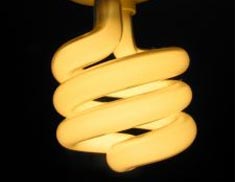SA to become electricity-savvy
Luyanda Makapela
Empty buildings with all the lights left on and home use of energy-guzzling heating and lighting methods may be a thing of the past, should government's new energy saving proposals be enacted.
These suggestions, as well as the use of solar power in new houses, flats and businesses, among others, are contained in the proposed new energy-saving regulations which are to be included in the Electricity Regulation Act.
"The aim of this campaign is to change the behaviour of consumers," Minerals and Energy Minister Buyelwa Sonjica said at the launch of South Africa's National Energy Efficiency Campaign on Tuesday.
The minister urged South Africans to switch off lights not in use, such as those in offices after working hours - as well as street lights during broad daylight.
The new regulations will also promote the use of energy-efficient light bulbs in place of incandescent lights.
Sonjica said the campaign, which will cost between R20-million and R40-million, would also look at the demand side management programme, with measures such as solar traffic lights, solar power heaters and creative systems lighting (CSL) set to come into effect soon.
Sonjica said Eskom has agreed to make one million solar water heaters available to encourage South Africans to use this alternative source of heating, as opposed to mains powered geysers.
"By adhering to the regulations, switching off lights in offices from 10pm to 6am for government buildings, except security lights, [we can save] about 1 080 megawatts, while working in our offices using daylight instead of electric light can save about 1 200 megawatts," she said.
Sonjica said the regulations would be supported by an electricity rationing framework, to be proposed in due course.
The proposed regulations include making use of solar heating panels in both commercial and residential buildings, to be implemented before 2010.
New houses, flats and townhouses valued at over R750 000 will be required to install electric geysers which incorporate a solar water heating facility. Residences that exceed 300 square meters will also have to install solar powered geysers.
Office blocks, hospitals, hotels and resorts and shopping complexes feeding from a centralised water heating system will also be expected to install solar powered heating systems.
All new geysers on the market will have to have insulation blankets which prevent heat from escaping and therefore save energy.
It has also been proposed that heating, ventilation and cooling systems in commercial and residential buildings as well as swimming pools be fitted with a facility whereby the supply of electricity can be controlled remotely.
The regulations will allow municipalities to pass by-laws, which will be in the interest of energy efficiency.
Comments on the regulations must be submitted to the department no later than 25 February 2008.
All comments must be addressed to Ompi Aphane and either e-mailed to LF.aphane@dme.gov.za or pm.ngobeni@dme.gov.za or posted to the Department of Minerals and Energy at Private Bag X59, Pretoria, 0001.
Source: BuaNews








 Facebook
Facebook Twitter
Twitter Mobile
Mobile RSS feeds
RSS feeds Newsletter
Newsletter Weblines
Weblines